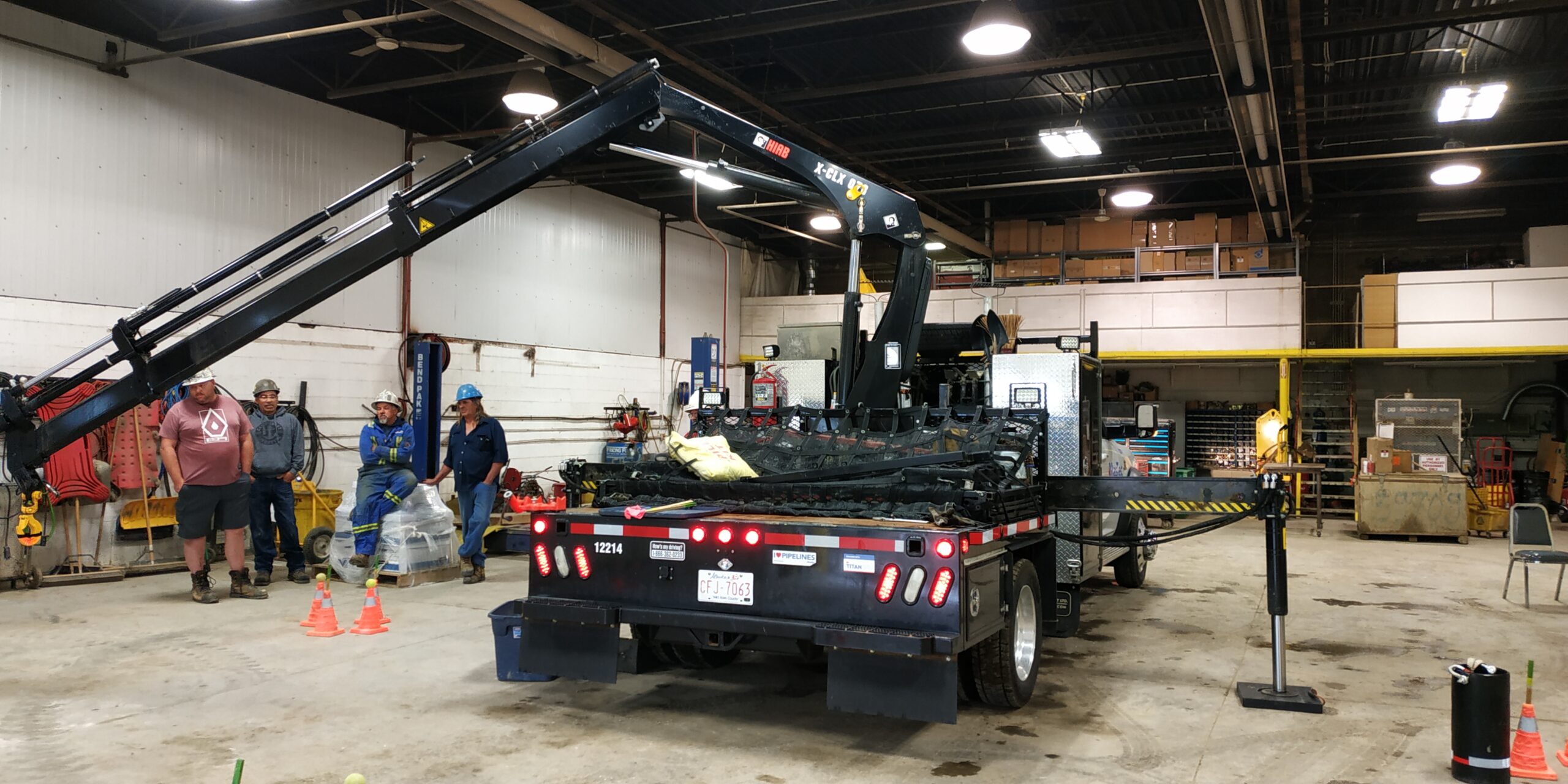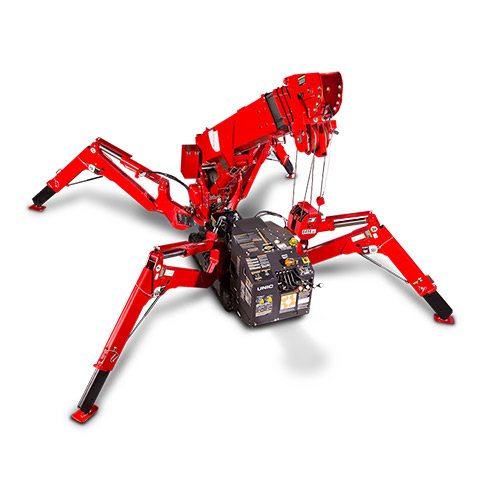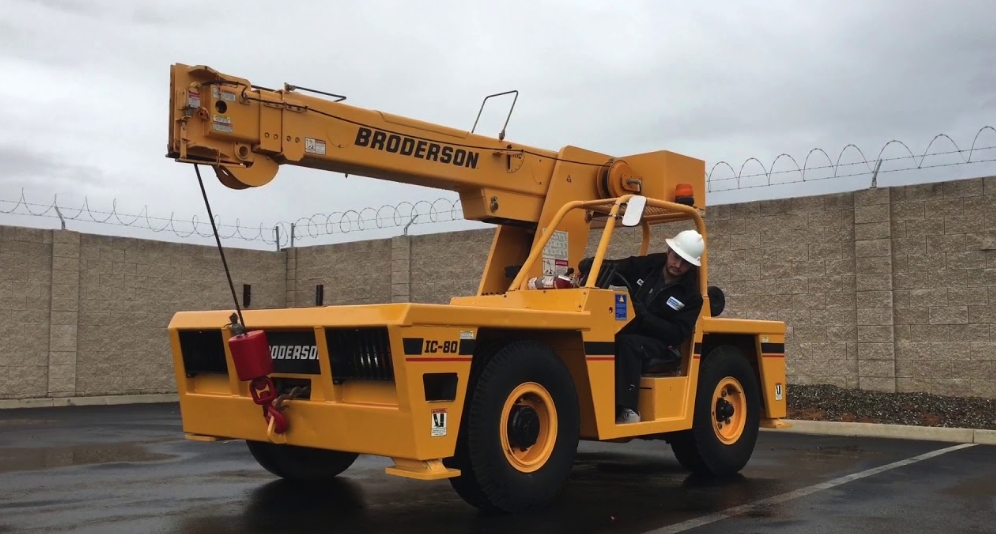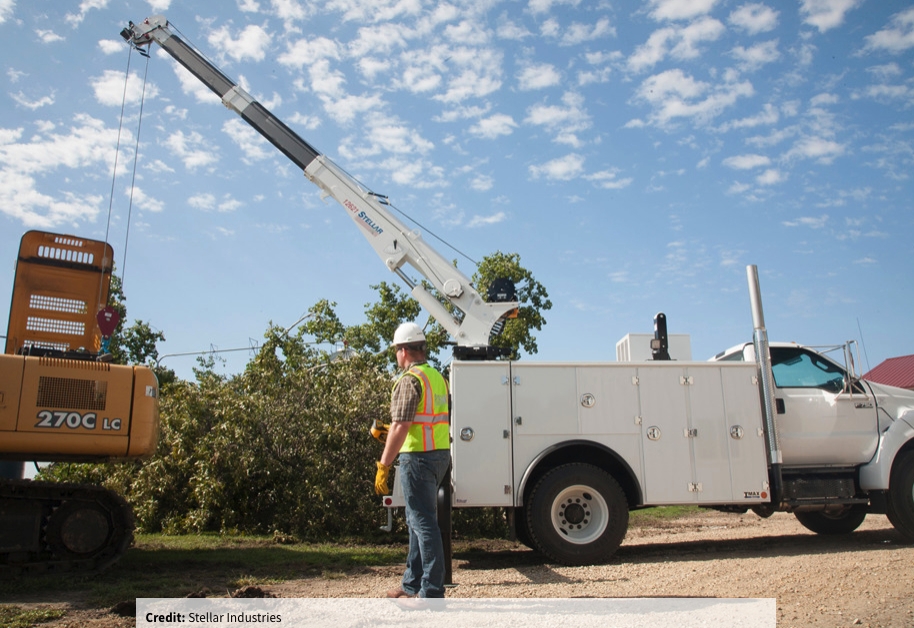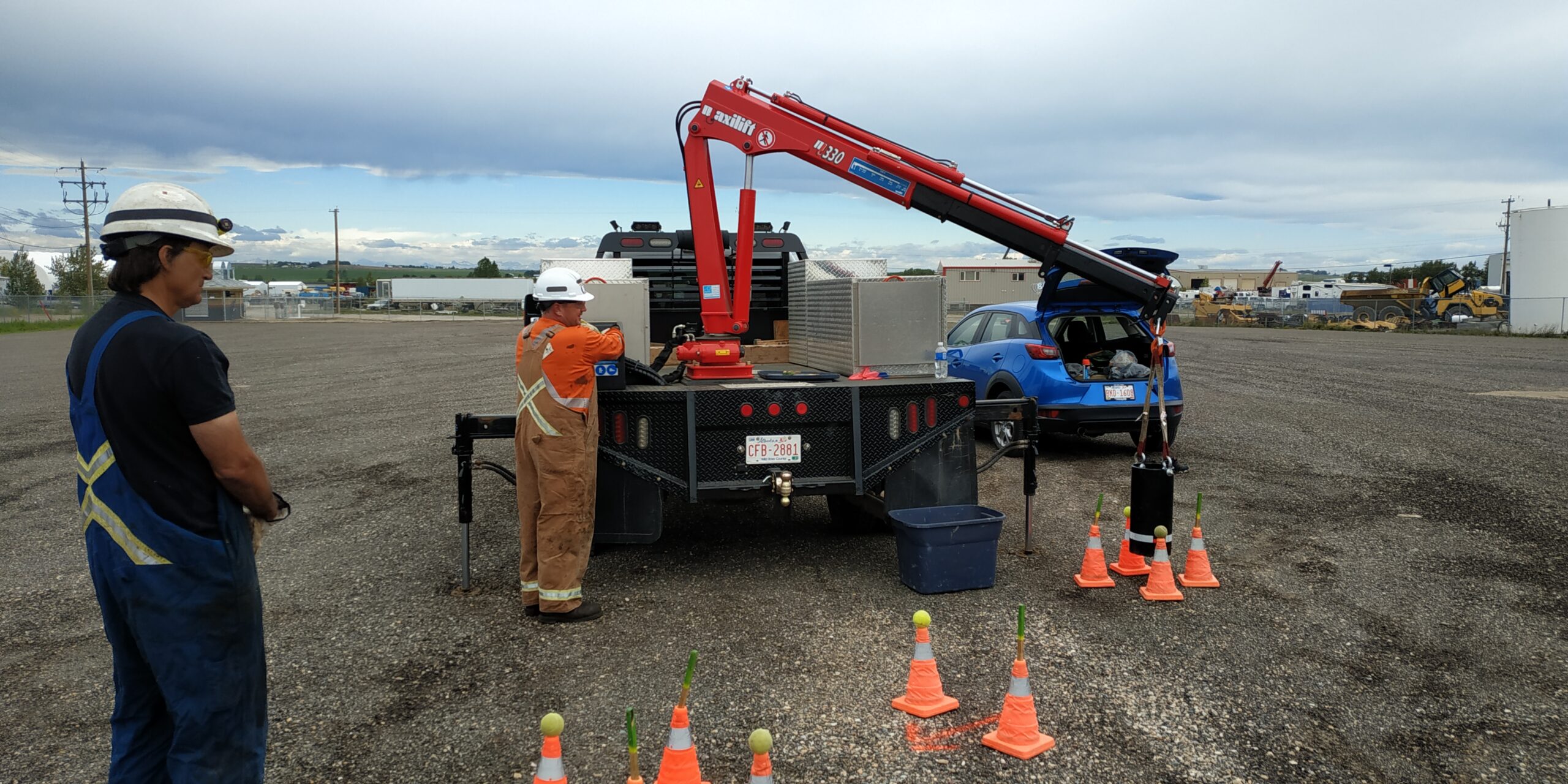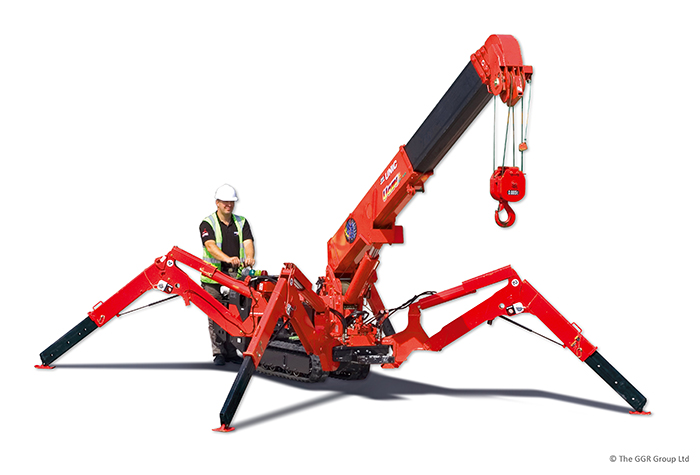 Mechanic Crane Stability is a topic we get all the time and unfortunately it’s also the least understood.
Mechanic Crane Stability is a topic we get all the time and unfortunately it’s also the least understood.
Many operators simply don’t understand the dynamics of crane stability well enough as they often don’t use the stabilizer on the mechanic service cranes at all!
There seems to be a threshold of when to use them properly and when it’s ok to “short-jack” the crane as they are lifting under xxx weight. Ok so how does this get so confused anyway? Lets look at the reason for stabilizer deployment in the first place:
- These are not “outriggers”, often a term used for the 2 legs that are deployed to prevent an unsafe lift. Outriggers are typically used on larger cranes where there are 4 in total used to lift the crane up and unload the suspension of the crane for added counter ballast.
- The stabilizers are designed to simply stabilize the truck during the lift and prevent unsafe crane operation
Now we won’t split any hairs here, call the as you wish, we are simply working on the “why” not the “what”.
So these smaller cranes typically will be installed by a service body installer as it’s not complicated stuff at all. Then the body builder will take the unit once complete and do a stability test on it based on the SAE J765 standard of testing. Also the crane manufacturer will provide all the details on how this is to be done AND recorded.
Now, given all that, when an owner or operator takes this out into the field, this is when it goes from good to not so much. So what do I mean?
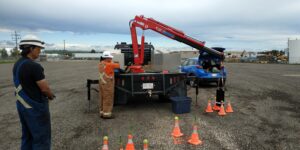 Lets assume the operator is working on a wheel loader with a transmission removal work order and the crane has to lift inside a cab. Also it’s been raining out for a few days and the ground is soft. So the transmission weighs in at 4,000 pounds, the crane is 6′ away from the unit and the operator DOES have both legs on the ground, life is good right!
Lets assume the operator is working on a wheel loader with a transmission removal work order and the crane has to lift inside a cab. Also it’s been raining out for a few days and the ground is soft. So the transmission weighs in at 4,000 pounds, the crane is 6′ away from the unit and the operator DOES have both legs on the ground, life is good right!
What about the soft ground beneath the crane and lack of stabilizer pads on that same soft ground? Then the service body was changed to a taller one vs what the crane manufacturer recommends it to be for proper stability? Note the taller the service body on a standard F550 Super duty (or chassis of preference) does impact the overall stability, taller bodies vs. shorter ones.
The technician lifts the transmission successfully out of the cab and swings it to the right and fails to have pulled out the moveable leg underneath the crane and pulls the truck over. Now it sounds far fetched but is very much a situation we’d heard about a few months back.
How does someone forget to deploy the moveable leg on such a heavy lift? Habits my friends, habits also tied to the fact that many of these little mechanic service cranes have manual out and manual down stabilizers for a “cost savings” and given the fact the over the course of 6 months, the stabilizer beam (the part the leg is attached to), gets packed with road debris over time and makes it very difficult to pull out for proper use, the technicians give up on keeping it clean and operational.
I’ve been in the field and know this first hand, while it does not make it even remotely right, I see the struggles they have and this is why I’m not a fan of the cheaper manual stabilizer leg kits.
Bottom line, how you do one thing is how you will do everything and if you continue to operate the crane in what is an unsafe manner, you will at some point, have an incident with the crane, recordable or not, it is preventable. Mechanic Service Crane Stability is not something you want to short cut on at all, there are far too many video on YT or other platforms that show what is the most often mis-used tool there is!
We now have an instructor led, virtual training program for these cranes, it has a theory section as well as practical that must be completed in order for you to become a certified operator. Contact us for details and pricing HERE.
